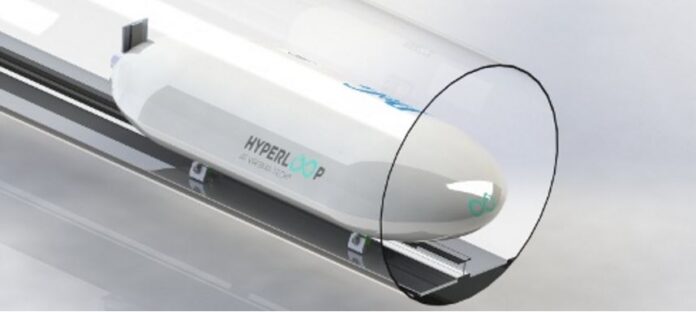
The Hyperloop at Virginia Tech team, “Vhyper,” scored big in Texas with a fourth place finish and a Technical Excellence Award against more than 120 teams representing many of the top universities in the world.
The Hyperloop competition pitted teams designing systems for the Hyperloop transportation system, a project initiated by SpaceX and Tesla founder Elon Musk.
The Hyperloop is a high-speed transportation system using a near-vacuum tube to propel a passenger-carrying pod at speeds potentially in excess of 700 miles per hour. The Virginia Tech team’s design incorporates magnets not only to levitate the pod, but also to provide braking power. The team will be one of more than 20 that move on to build a prototype to be tested at a 1.5 kilometer test track facility in California this summer.
In addition to their finish, and invitation to test their design, the team also secured a cash prize from SpaceX, and the students’ presentations helped earn the team sponsorships from Cooley, ANSYS, and Performance Associates.
The Vhyper team brings together students from mechanical, aerospace, and electrical engineering, and engineering, science and mechanics. The team is advised by Pat Artis, professor of practice with the Department of Engineering Science and Mechanics, and Dewey Spangler, Ware Lab manager. Supporting the team in their initial design were sponsors including Proctor and Gamble, Performance Associates, The Rogers Company, ANSYS, SolidWorks, and the Ware Lab.
“One of our biggest strengths is that we’ve proven the concepts of operation, and that wouldn’t have been possible without the funds, tools, and software provided to us,” said Daniel Kimminau, of Williamsburg, Virginia, team lead. “We intentionally started small to ensure everyone is making decisions and designing with knowledge of the bigger picture, which allows us to be very dynamic in our design.”
Kimminau, a junior majoring in mechanical engineering, said the team is very proud to have been awarded the Technical Excellence Award. “The award was given to teams who went into incredible detail, analysis, and specifications, so while the top five are the best designs, this award represents a best execution of the design process.”
After the awards were announced, Musk took the stage and spoke to the more than 1,000 students present and he outlined the next step of the competition, implying it will be fun and nerve wracking at the same time.
“The basic idea is to get the highest possible speed in 1.5 kilometers – and stop before the end. The idea is to accelerate – we’ll have a big screen showing the speed of the pod and there will be a big crowd in [Los Angeles] with a lot of people watching – so people will see the speed get to some crazy number and watch it brake. There will be a lot of tension … will it [stop] in time?”
The top five places in the competition went to:
- Massachusetts Institute of Technology
- Delft University of Technology (Netherlands)
- University of Wisconsin, Madison
- Virginia Tech
- University of California, Irvine
Others who have been invited to this summer’s competition include: Carnegie Mellon University, Drexel University, Purdue University, Texas A&M, University of Maryland and Rutgers, University of California Santa Barbara, and UC Berkeley.
Follow the Vhyper team on Facebook, Twitter , and Instagram,


